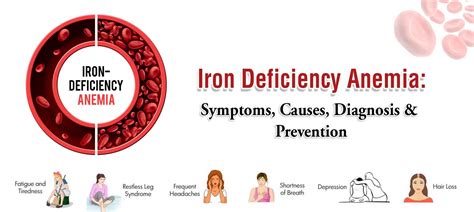Iron Deficiency Anemia - Causes, Symptoms, and Treatment
Iron Deficiency Anemia FAQ
What is iron-deficiency anemia?
Iron-deficiency anemia is the most common type of anemia. It occurs when your body doesn’t have enough iron, which your body needs to make hemoglobin. When there isn’t enough iron in your blood, the rest of your body can’t get the amount of oxygen it needs. While the condition may be common, many people don’t know they have iron-deficiency anemia.
What is the difference between iron deficiency and anemia?
Iron deficiency is having too little iron in your body. Iron is in red blood cells . Anemia is a low blood cell count. Specifically, you don't have enough red blood cells. You need iron to make hemoglobin, the substance in red blood cells that carries oxygen throughout your body.
What type of anaemia is caused by a lack of iron?
Anaemia caused by a lack of iron is called iron-deficiency anaemia (IDA). Other types of anaemia (not related to iron deficiency) include: Folic acid deficiency anaemia. Macrocytic anaemia. Vitamin B12 deficiency and pernicious anaemia.
What is iron deficiency anemia?
Learn more about Mayo Clinic’s use of data. Iron deficiency anemia occurs when your body doesn't have enough iron to produce hemoglobin. Hemoglobin is the part of red blood cells that gives blood its red color and enables the red blood cells to carry oxygenated blood throughout your body.
What are the symptoms of iron deficiency anaemia?
The cause of iron deficiency anaemia is often multifactorial and may be broadly attributed to dietary deficiency, malabsorption, increased loss, or increased requirements. Symptoms commonly include fatigue, dyspnoea, and headache. Common signs of iron deficiency anaemia include pallor and atrophic glossitis.
How does iron deficiency anemia affect the body?
Red blood cells carry oxygen to the body's tissues. As the name implies, iron deficiency anemia is due to insufficient iron. Without enough iron, your body can't produce enough of a substance in red blood cells that enables them to carry oxygen (hemoglobin). As a result, iron deficiency anemia may leave you tired and short of breath.
Iron Deficiency Anemia References
If you want to know more about Iron Deficiency Anemia, consider exploring links below:
What Is Iron Deficiency Anemia
- https://www.nhs.uk/conditions/iron-deficiency-anaemia/
- https://www.mayoclinic.org/diseases-conditions/iron-deficiency-anemia/symptoms-causes/syc-20355034
- https://www.nhsinform.scot/illnesses-and-conditions/nutritional/iron-deficiency-anaemia
- https://cks.nice.org.uk/topics/anaemia-iron-deficiency/
- https://patient.info/allergies-blood-immune/anaemia-leaflet/iron-deficiency-anaemia
- https://en.wikipedia.org/wiki/Iron-deficiency_anemia
- https://www.healthline.com/health/iron-deficiency-anemia
- https://www.nhlbi.nih.gov/health/anemia/iron-deficiency-anemia
- https://www.msdmanuals.com/en-gb/home/quick-facts-blood-disorders/anemia/iron-deficiency-anemia
Iron Deficiency Anemia Information
Explore Related Topics
Can a vegetarian or vegan diet lead to hair problems?
Dive into the debate on whether following a vegetarian or vegan diet can have any adverse effects on your hair health and what to consider.
Are there specific minerals that can prevent hair thinning?
Engage in the discussion about the minerals that are known to promote hair thickness and prevent hair thinning.
Can a low-carb diet contribute to hair loss?
Dive into the debate on whether following a low-carb diet can potentially lead to hair loss and how to mitigate the risks.
